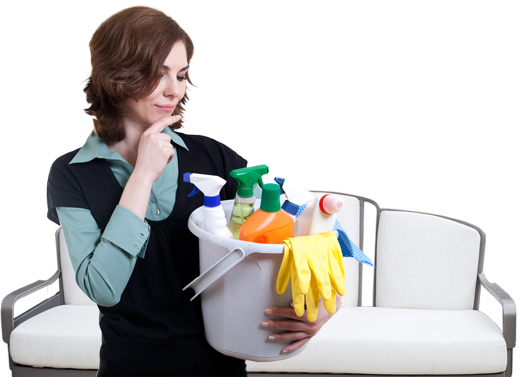Why Prioritizing Air Quality in Homes and Workplaces is Essential
Posted on 07/06/2025
Why Prioritizing Air Quality in Homes and Workplaces is Essential
Indoor air quality (IAQ) is a vital aspect of our overall well-being, yet it often goes unnoticed in our daily lives. With people spending a significant portion of their time indoors, whether at home or in the workplace, the quality of the air we breathe directly influences health, productivity, and comfort. This article delves into the reasons why prioritizing air quality in both homes and workplaces is not just desirable--it's essential.
The Growing Importance of Indoor Air Quality
As urbanization and industrialization increase, so too does our exposure to indoor pollutants. Modern homes and office buildings are more airtight to improve energy efficiency, but this often leads to the accumulation of indoor pollutants. According to the Environmental Protection Agency (EPA), indoor air can be two to five times more polluted than outdoor air on average, making air quality in homes and workplaces a pressing issue.
Why is Indoor Air Quality Often Overlooked?
- Invisible nature of most pollutants
- Misconceptions that indoor air is cleaner than outdoor air
- Lack of visible symptoms, especially in the short-term
- Limited public awareness of sources and impacts
- Focus on other comfort aspects like temperature or noise

Key Reasons to Prioritize Air Quality Indoors
Maintaining optimal indoor air quality is not just about comfort--it's a necessity for health, productivity, and even financial well-being. Here's why paying attention to the air we breathe at home and at work should top your priority list.
1. Health Benefits: Safeguarding Short and Long-Term Wellness
Exposure to poor air quality can lead to immediate effects such as headaches, dizziness, fatigue, and irritation of the eyes, nose, or throat. However, the risks are not limited to short-term inconveniences. Chronic exposure is associated with a range of serious health problems, including:
- Respiratory diseases: Conditions like asthma, bronchitis, and chronic obstructive pulmonary disease (COPD) can be triggered or worsened by indoor air pollutants.
- Cardiovascular issues: Long-term exposure to particulate matter and other contaminants increases the risk of developing heart diseases.
- Allergic reactions: Dust mites, mold, and pet dander are common indoor allergens that can exacerbate allergies.
- Infectious diseases: Poor ventilation allows pathogens such as viruses and bacteria to thrive.
- Cancer risks: Radon gas, a naturally occurring radioactive gas, and volatile organic compounds (VOCs) from household products are significant carcinogens found indoors.
2. Boost Productivity and Cognitive Performance
Did you know cleaner air can make you smarter? Studies have linked high levels of indoor pollutants with reduced cognitive function. In workplaces, this translates to lower productivity, increased absenteeism, and higher rates of error.
- Cleaner air leads to sharper focus and better decision-making
- Improved air quality reduces sick days and boosts morale
- Enhanced comfort contributes to greater employee satisfaction
3. Comfort and Well-Being
A key factor in achieving a comfortable living or working environment is high indoor air quality. Proper ventilation and humidity control prevent issues such as:
- Unpleasant odors and stuffiness
- Mold growth and dampness, which can damage property
- Physical discomfort due to excessive dryness or moisture
- Irritation of skin and mucous membranes
4. Protecting Vulnerable Populations
Certain groups are more susceptible to the effects of poor air quality, including children, the elderly, pregnant women, and individuals with pre-existing health conditions. Prioritizing clean indoor air creates a safer environment for everyone but is particularly crucial for these at-risk groups.
- Children's respiratory systems are still developing
- Seniors are often more vulnerable to pollutant exposure
- People with chronic illnesses or compromised immune systems need extra protection
Common Sources of Indoor Air Pollution
Understanding the sources of indoor pollutants is the first step toward improving air quality inside homes and workplaces. Some of the most prevalent contaminants include:
- Biological pollutants: Mold, pollen, pet dander, bacteria, and dust mites
- Chemical pollutants: VOCs from paints, cleaning products, building materials, and personal care items
- Combustion products: Carbon monoxide, nitrogen dioxide, and particulates from cooking, heating, and smoking
- Radon gas: Emitted from soil and certain building materials
- Outdoor pollutants: Polluted outdoor air can infiltrate indoor environments through windows, doors, or ventilation systems
Emerging Sources to Consider
Modern technology and changing lifestyles introduce new risks:
- 3D printers and office equipment emissions
- Increased use of synthetic materials in interiors
- Home fragrances, candles, and scented products
How to Improve Air Quality in Homes and Workplaces
Tackling indoor air pollution requires a multi-faceted approach. Here's how you can make a tangible difference in your environment:
Assess and Monitor Air Quality
- Install low-cost air quality sensors to detect VOCs, CO2, and PM2.5 levels
- Have your property professionally tested for radon and mold
- Conduct regular inspections for water leaks and sources of dampness
Ventilation and Air Filtration
- Ensure all spaces are well-ventilated with fresh, outdoor air
- Use exhaust fans in kitchens, bathrooms, and laundry areas
- Install and regularly maintain HEPA and activated carbon filters in HVAC systems
- Consider portable air purifiers for high-traffic areas
Reduce Sources of Indoor Pollution
- Opt for low-VOC paints, finishes, and cleaning agents
- Prohibit or restrict smoking indoors
- Keep humidity levels between 30-50% to limit mold and dust mite growth
- Regularly clean air ducts, carpets, drapes, and upholstery
- Limit the use of air fresheners, candles, and incense
- Store chemicals and solvents securely, away from living areas
Green Solutions: Plants and Eco-Friendly Materials
Plants can act as natural air filters, although their impact is limited compared to mechanical systems. Nevertheless, incorporating greenery and using natural, non-toxic materials for furnishing and decoration contributes to better indoor air.
Economic Advantages of Good Indoor Air Quality
Financial gains are often overlooked when considering the impact of indoor air quality. Both homes and workplaces stand to benefit economically from adopting air-friendly solutions:
- Lower healthcare costs due to fewer illnesses
- Reduced absenteeism and increased employee retention in offices
- Prolonged lifespan of building infrastructure and electronic equipment
- Higher property value for homes with verified good air quality
Legal and Regulatory Factors
Governments worldwide are increasingly recognizing the importance of air quality standards in indoor environments. For businesses, failure to comply with occupational health and safety regulations can result in hefty fines and reputational damage.
- OSHA and EPA standards for workplace air quality
- Stricter building codes for ventilation and material safety
- Certification programs (e.g., LEED, WELL) for healthier buildings

Future Trends: Smart Technologies and Air Quality
Advancements in technology are rapidly transforming the way we monitor and control indoor air. Smart home devices, remote sensors, and automated HVAC systems now make it easier to maintain optimal air quality round the clock.
- Real-time air quality monitoring via apps and dashboards
- Automated purifiers and ventilation systems
- Integration with smart building management for energy-efficient solutions
Conclusion: Making Air Quality a Top Priority
Prioritizing air quality in homes and workplaces is not a luxury--it's a necessity for health, productivity, and quality of life. As we've seen, the stakes are high, ranging from the prevention of chronic disease and allergy management to economic advantages and compliance requirements. By taking a proactive approach to improving air quality, we can create safer, healthier, and more comfortable environments for all.
Take action today: Assess your indoor spaces, implement best practices, and invest in solutions that ensure everyone can breathe easy. Remember, the quality of the air you breathe determines the quality of your life. Make it a priority.
FAQs
- Q: How often should air quality be tested?
A: At least once a year, or more frequently if you notice health symptoms or changes in your environment. - Q: What are the signs of poor indoor air quality?
A: Persistent odors, visible mold, unexplained coughing or allergy symptoms, and excess dust. - Q: Are air purifiers worth the investment?
A: Yes, especially for those with allergies, asthma, or if your building is in a high-pollution area.
For further information on improving indoor air quality in your home or workplace, consult environmental specialists or reputable online resources such as the EPA and World Health Organization.




